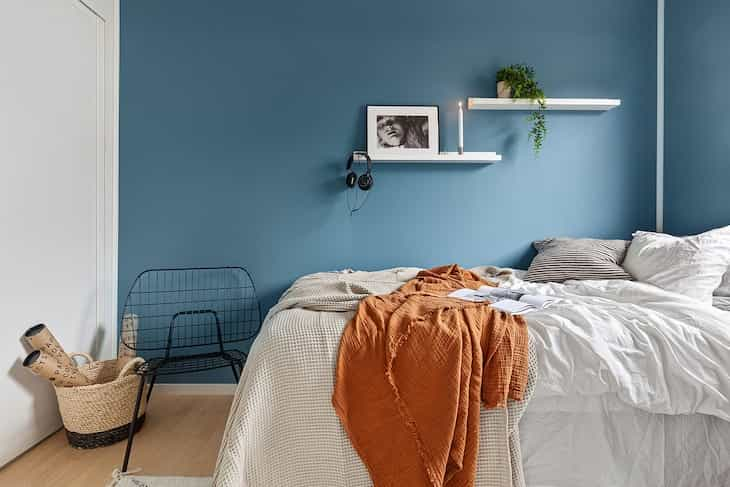Different colors create different visual effects, and that's why you need to choose them carefully when creating your interior design.
For instance, if your room has a high ceiling, then some colors can make it look even higher, or way lower.
Here are a few tips on how to choose a perfect color.
Assess the Natural Light
Observe how the natural light enters the room.
If it receives plenty of sunlight, you can choose lighter colors that won't make the room feel too bright.

If the room lacks natural light, you might want to opt for warmer or brighter colors to add warmth and brightness.
Think About the Ceiling
With a high ceiling, you have an opportunity to create visual interest.
Consider painting the ceiling a different color than the walls to add depth and dimension.
You can choose a lighter shade if you want to visually lower the ceiling or a darker shade to accentuate the height.
Harmonize with Existing Elements
Consider the existing elements in the room, such as flooring, furniture, and decor.
Choose colors that complement or coordinate with these elements to create a cohesive look.
Sample Small Areas
Before committing to a color, test it on a small area of the wall to see how it looks in different lighting conditions.
Colors can change depending on the room's lighting, so make sure you're happy with the chosen color before painting the entire room.
Consider Color Temperature
Colors can be warm (e.g., red, orange, yellow) or cool (e.g., blue, green, purple).
Think about the atmosphere you want to create and choose colors that align with that feeling.
Warm colors can make a room feel cozy, while cool colors can create a refreshing or calming ambiance.
Use Contrast
Experiment with contrasting colors to add visual interest.
For example, if the walls are painted in a light shade, consider adding a darker accent color for trim, molding, or furniture to create contrast and depth in the room.
Previously, we talked about blankets.









